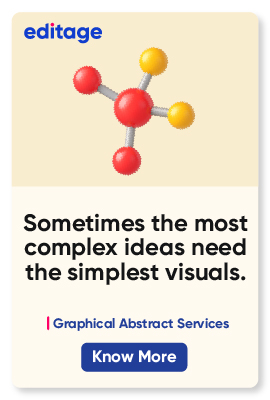The Rise of Visual Abstracts in Medical Publishing

Visuals are an excellent means of communicating in medical research, especially to convey complex scientific findings to lay people. From the very first medicine-related visual abstract published in Annals of Surgery in 2016, we have only seen exponential growth in its implementation.
But do graphical abstracts actually increase citations in medical journals? Or could these visual abstracts be misleading? Read on to know more!
How Visual Abstracts Help in Medical Publishing
Best Practices for Designing Medicine-Related Visuals
How Visual Abstracts Help in Medical Publishing
Yes, visual abstracts are known to help in research dissemination, especially on social platforms like X and LinkedIn. The case-control crossover study1 reported in Annals of Surgery led to widespread adoption of graphical abstracts in medical journals.
In 2020, a triple crossover study2 confirmed that tweets containing visual abstracts in nephrology research received twice as many views as citation-only tweets. Moreover, the Altmetric scores were higher in posts shared with visual abstracts. A similar result was observed by a study3 related to sport science, thereby confirming the pattern across specialties.
Although the use of visual abstracts does increase views, there is no concrete proof of it increasing citations. Moreover, their performance is highly dependent on the domain. So, where exactly are graphical abstracts helpful in the medical field?
- Visual abstracts for social engagement: There is enough evidence to support that visual abstracts help in disseminating research on social media through improved impressions, views, and retweets, leading to better click-through rates. In other words, your research can easily reach clinicians, trainees, and the public.
- Visual abstracts for quick reference: Doctors and medical professionals are busy people, and the use of visual abstracts in the journal’s table of contents serves as a quick help in deciding which research articles to read.
- Serves as a multi-purpose aid: Visual abstracts can also be reused (or redesigned) for conference presentations or poster presentations. Some educators even use them for teaching purposes.
- Visual abstracts for simplifying concepts: Carefully and accurately designed graphical abstracts easily translate medical concepts to policymakers and other non-specialists associated with the field.
These benefits sound wonderful! But know that designing graphical abstracts in medical publishing is not to be taken lightly.
Best Practices for Designing Medicine-Related Visuals
Graphical abstracts, when not done right, can be misleading and result in the dissemination of misinformation. A content analysis of 140 medical graphical abstracts published by Journal of Internal Medicine between February 2019 and May 2020 indicated evidence of racial, gender, and size bias in medical graphical abstract gallery4. The study reported that this bias tends to link large-sized bodies with disease and combines race with genetics, distorting the understanding of diseases rather than enhancing it.
So, here are 5 practical recommendations for designing medicine-related visuals.
- Accuracy comes first: Always design the graphical abstract for accuracy first. Include key numbers, such as the sample size, dosages & frequency, critical dates, duration of experiment or treatment, and statistical data if relevant. You should also specify the study design (e.g., case-control study, RCTs, observational study, etc.) for clarity.
- Prioritize journal-recommended templates: Several journals provide graphical abstract templates as reference that can be used for simplifying the design. The benefit of using these templates is two-fold: one, you ensure that your graphical abstract complies with journal’s requirements. And two, starting with a readymade template reduces your burden in terms of designing!
- Do not oversimplify: In medicine-related visuals, the icons, graphics, symbols, and images should be chosen carefully. Although the visual abstract is meant to appeal to general audience, using incorrect visuals could not just oversimplify the message but also convey inaccurate information. It is always better to use platforms like Mind the Graph that provide scientifically accurate illustrations to design visual abstracts.
- Ensure accessibility & equity: Use alt text to make graphics understandable to users with visual impairments. Pay close attention to color contrasts as well and avoid pictures that marginalize groups.
- Get it peer-reviewed: Visual abstracts tell a story; but does the story make sense to people who are not familiar with your study? Treat the graphical abstract like a mini research paper and have it reviewed by colleagues or professionals. Use their input and improve your graphic’s presentation.
References
1. Visual abstracts to disseminate research on social media https://journals.lww.com/annalsofsurgery/citation/2017/12000/visual_abstracts_to_disseminate_research_on_social.36.aspx
2. A picture is worth a thousand views https://www.jmir.org/2020/12/e22327/
3. Graphical abstracts in sport science https://link.springer.com/article/10.1007/s11192-023-04709-2
4. Racial, gender, and size bias in a medical graphical abstract gallery https://pubmed.ncbi.nlm.nih.gov/37786527/
Looking to make your research more impactful? Check out Editage’s Graphical Abstract Design Services and get professional support to make your research stand out.










